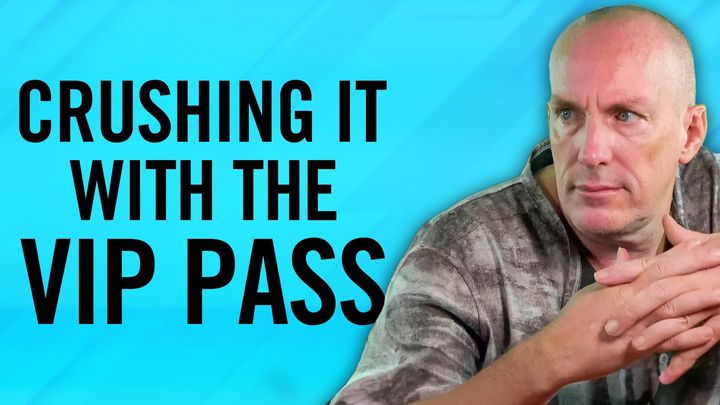Customer Acquisition Vs. Backend Profits

“The business that’s willing to spend the most money to acquire a customer wins.” I first heard that quote from Perry Belcher and Ryan Deiss, but the the most successful businesses used the concept for years. Customer acquisition is the concept behind loss leaders and its how businesses like Walmart are so successful. But it’s direct response and online marketers who made this into a science.
The real secret to building a large successful business, especially in the online space, is knowing the difference between marketing for customer acquisition and marketing to make a profit. And when and why you use each.
So many businesses care only about the profit and markup of their products and market to everyone the same. But meanwhile the businesses who understand the concept you’ll learn in a moment, are stealing all the customers, and many times putting competitors out of business.
First let’s discuss the difference.

Customer Acquisition
The biggest expense any business has, is in gaining new customers. New prospects don’t know you, are hard to track down, and need the most persuasion to buy.
Any marketing we do to find and persuade these customers to buy from us is front-end marketing.
Customer acquisition is front-end marketing and refers to campaigns meant to reach out to customers who have never purchased from us before. Facebook and YouTube ads, purchased email lists, ads in magazines on TV and Radio, etc. all fit into this bucket.
With new customer acquisition, you are competing with other business, and competing with the fact these prospects don’t know like and trust you yet.
In the online world, we call the first time money changes hands a front end sale. It doesn’t matter whether its 1-dollar or a million dollars, it’s the first transaction a new customer has with you. Every other purchase these customers makes the back-end.
Like I said earlier, new customer acquisition is the biggest expense a business has. And as you’ll learn later in this article, while vitally important, rarely results in any profit.

Profiting from the Back End
A business's back end sales are sales made to existing customers. This includes continuity programs where you make revenue every month. But it also includes every other purchase a customer ever makes from you in their lifetimes.
This is where the most successful companies reap their profits.
Using the back end correctly can be an amazing profit house.
Every sale you make on the back end is pure profit because you've already spent all the expense of customer acquisition. Reaching out to these clients is inexpensive because they already know you. You can email, make a post to your followers, or even mention a new product in a blog post and existing customers who know like and trust you will eat it up.
But, to understand and profit in this market, you have to track your customers average lifetime value. Because once you're on top of this value, you can blow past your competition.
Understanding the back-end is the main strategy companies like Agora Financial use to become 500 Million dollar behemoths. Using this strategy takes cajones and some capital, but that’s why it pays to be scientific.
Understanding Customer Acquisition Costs and Back End Profits
Before building a successful front and back end strategy, there’s a few important conversion metrics you need to track.
Visitor to Lead Conversion Rate (VLC)
Often called clicks, VLC is the number of views of your sales material it takes for a cold prospect to put up their hands and say they are interested.
In the online world, you usually do this via an optin or “squeeze” page where the prospect enters their email address for a free report, video, checklist or other piece of value.
Lead to Sale Conversion Rate (LSC)
This is the number of views it takes for a lead, or a cold prospect if skipping the step above, to buy something. So if you make one sale for every 10 views to your sales page, you have a 10% conversion rate.
Cost Per Action (CPA or CPC)
This value, also called cost per click, is the cost it takes to get your pitch (landing page, sales video, whatever) in front of a customer. This cost could be for views of either the optin page (Visits to Leads) or direct to your sales page (Visits to Sale).
Regardless of your strategy, if you grab the 3 metrics above, you can get the most important metric of all…
Cost to Acquire A Customer
This is the cost, including advertising costs, click costs, and royalties or commissions it takes to get a brand new customer. A customer is defined as a prospect who has spent any amount of money with you. In some businesses, like coaching for example, it can also include customers who have attended a webinar or conference, or otherwise invested significant time with you.
Customer Lifetime Value (CLV)
The final metric, potentially the most important, and the one most marketers miss, is customer lifetime value. This is the average amount any one customer spends with your company over their life time.
CLV can be the most difficult metric to track. Although tools exist to make it easier. But it’s the metric that will take your business from mediocre to world class.
How to Use these Values
For this example, let’s work with some easy numbers. Let’s say you’re selling a $100 / year continuity product. Because it’s a virtual product, it costs nothing to package or send, so customer acquisition costs are the only expenses you’ll face.
Most customers renew for 6—10 years, and the average lifetime value of a customer is $500.
For the sake of simplicity, we won’t use any lead generation and send traffic directly to a sales page. We’ll assume a 10% conversion rate (which to cold traffic would be high).
What most businesses do…

Most businesses, especially small players, look at a product and their advertising and try to figure out how much profit they can make on a sale. In this example, let’s say they want to make a 50% profit on the campaign, or $50 / sale.
If they have a 10% conversion rate, that means they can spend up to 50c per visit to get a customer.
Any more and they’d consider their marketing efforts a failure and wouldn’t make $50 on the campaign.
If they get 50 new customers, they’ll make $2500 on the front end. They’d consider this a success, since they invested $2500 to make $2500 profit.
They’ll also make $25,000 over the life of their business from the new customers they gained.
The problem is, this approach limits their ability to scale.
They can’t work in competitive markets because click costs would be much higher. And they’d limit their ability to improve and optimize their copy because they can’t afford royalty and copywriting fees.
These businesses need to go after to low hanging fruit, small segments, and low numbers of customers.
What Experienced Marketers do…

Experienced marketers realize you make the real profits in the back-end, after customer acquisition. They understand the more customers they have, the more they make over the long haul.
Smart, experienced marketers want to maximize their customer counts and aim to break even on the front end.
That means, with the same 10% conversion rate, they can spend up to $1.00 per click to get a customer. Or, they can sell an “intro” package for $50 instead of $100. They can also pay 5 – 20% royalties to a good copywriter or marketing consultant, increasing their conversion percentage.
If the experienced marketer goes against the business above, who’s getting more impressions, more showings, and more sales? It’s the experienced marketer every time. Even if they sell the same product.
Because this group has a better price and / or more views thanks to higher bids, they might get 100 new customers instead of 50. On the front end, they’ll break even. But on the back end, their campaign is worth $50,000, twice as much as the small shop, more than worth the $2500 sacrifice.
What World Class Marketers Do…

Pro marketers looking to dominate their market take things one-step further. They know every customer they bring into their business is worth $500 to their bottom line. Because they’ve tracked this number systematically at every step of their funnel, they can afford to lose money on the front-end to gain customers.
This strategy takes courage, but if they’re tracking their statistics and proceeding scientifically, they can approach it unemotionally. It also requires short-term capital, so it's not for everyone.
But this is how we build empires.
If this groups spend $1.50 or $2.00 per click, he'll push his competitions ads down so low no one will even see them. Alternatively, or in conjunction, they can discount even further than the experienced marketers or offer incentives like $1 trials. They'll also invest in copywriting royalties.
Because they’re systematic, they can dominate their market, crush the competition, and have tons of clients. They can scale their business to any level they want by entering new markets. And they have no competition because the only business advertisements showing up, are theirs.
In our example, by grabbing the entire market, their campaign gets 200 new customers. Maybe they lost a couple thousand on the front end. But they made it up with their $100,000 in back end sales.
This example was a very simplified, and used the same front and back-end product. It didn’t take into account other products or the improved conversions you’ll see when you’re prepared to pay royalties or higher marketing fees. But it shows how the different strategies create monumental shifts in revenue.
Marketing is part art and part science but we have the most control over the science. If you want to drive fast cars and live in big homes, tracking everything is vital because when that information is used strategically, it positions you ahead of your competition.
This strategy isn’t for newbie marketers. If you're bootstrapping, you can’t afford to lose money, and should aim for break even or better. If you’re new, you might need to narrow your niche and take profits on the front until you have a bank account…
But if you can afford to carry the load short term, remember, the business that wins is the one willing to spend the most to get a new customer. And relies on back-end sales for their profit.




